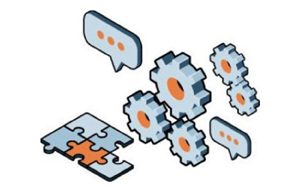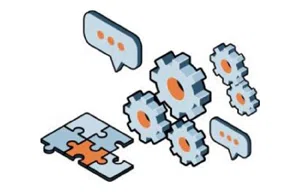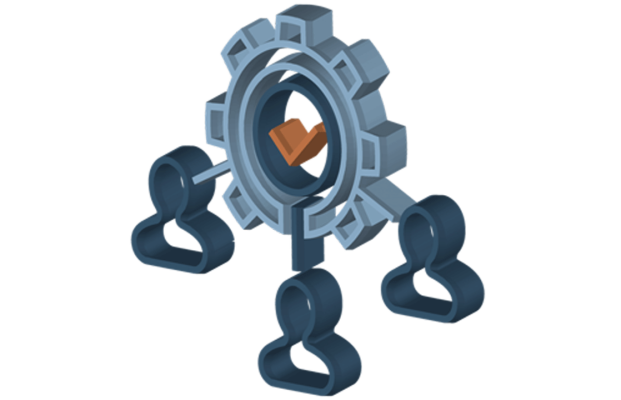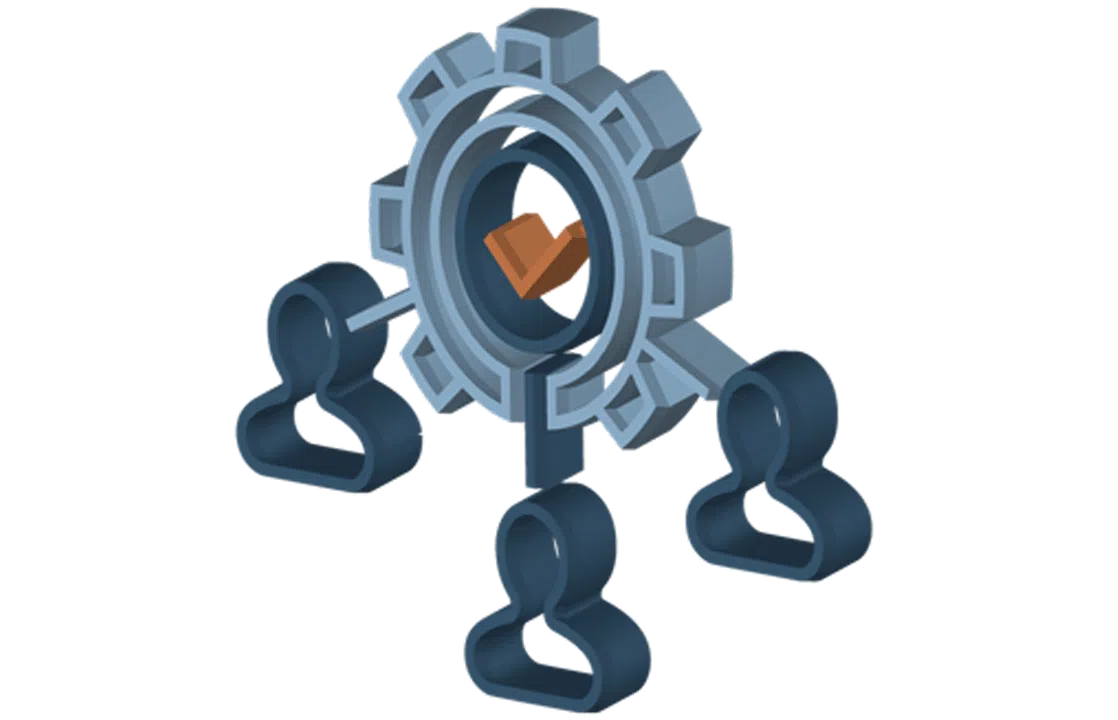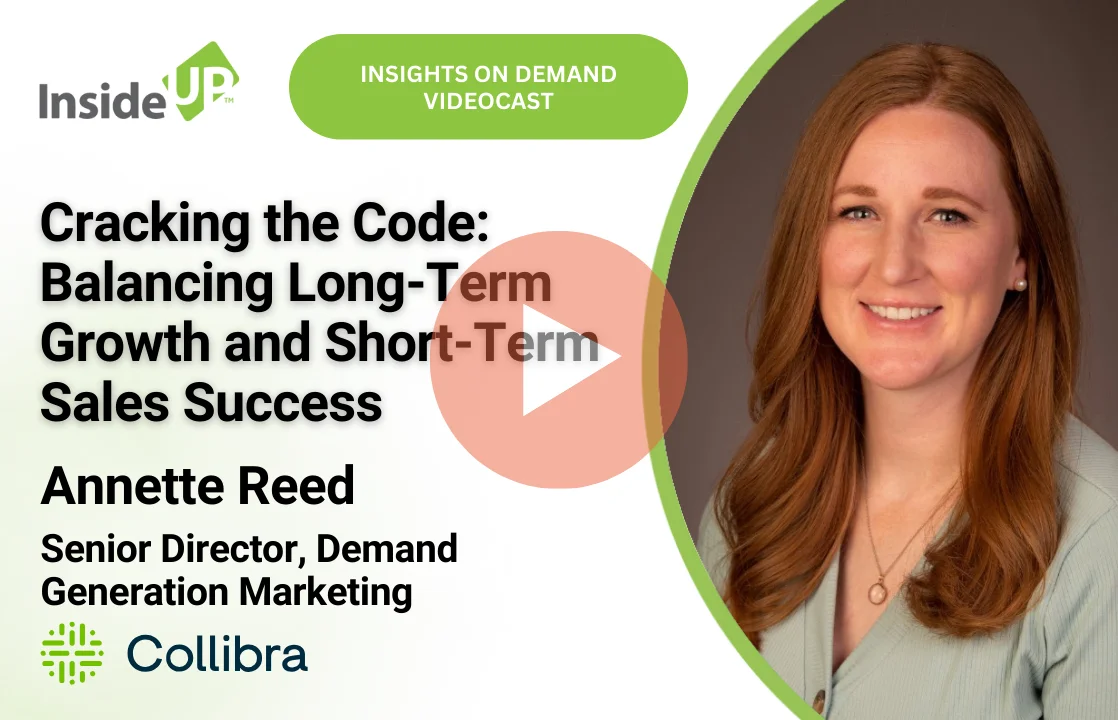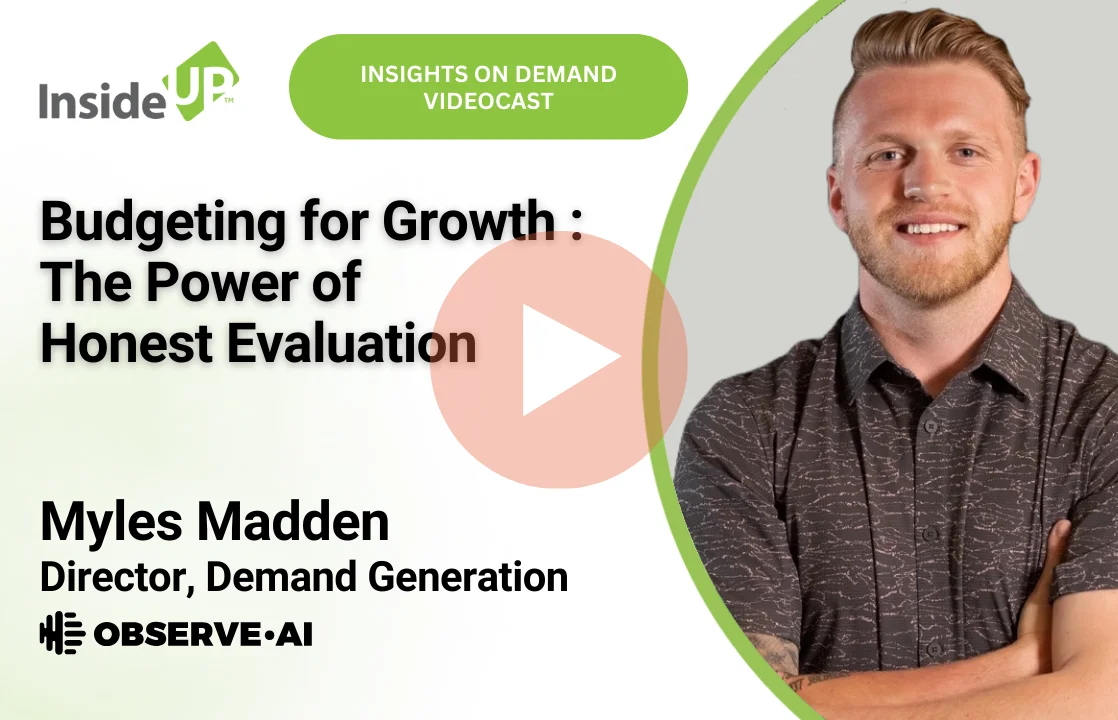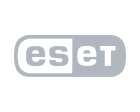
I recently spoke with Jamie Walker, VP Marketing Keyfactor, as part of a continuing thought leadership initiative sponsored by InsideUp. Our previous series focused on #buyingcommittees. This interview with Jamie is the first in a new series where we are looking to better understand sales & marketing alignment.
Even though Keyfactor provides a complex offering to a highly technical market, their business environment is very much sales-driven (in fact, CEO Jordan Rackie has a background in that particular business function). Because Keyfactor sales and marketing teams have been directed to share key performance indicators, Keyfactor is able to initiate marketing campaigns (ABM-related or otherwise) that keep sales needs top of mind.
Takeaways
• Sales and Marketing alignment starts at the executive level of management
• Shared metrics need to be based on key performance indicators
• Promote transparency and systemic feedback – both internal within marketing and with sales
• Integrate teams with the needs of sales teams at the core
Volume-Velocity: Lead-Based Model
Keyfactor provides Public Key Infrastructure (PKI) as-a-Service and crypto-agility solutions. Based in Independence, Ohio, they have approximately 150 employees and operate primarily in the US and UK. Their audience is primarily global enterprise with technical and executive personas.
Sales teams (each led by a sales director) are geographically dispersed into what Jamie called “pods”, each with a supporting team of business development executives and solution engineers. Target accounts are segmented into enterprise and mid-market and then grouped into tiers A through D. When responding to opportunities, field marketing works closely with sales “pods” on both content and cadence. A campaign manager works closely with a team of SDRs on lead development. The point at which marketing transitions a lead to sales (or does a “hand-off” at that stage in the business development “workflow”) is when a SDR has scheduled a confirmed appointment.
Jamie continued “…when we look at our demand generation, we basically have a volume-velocity approach – which is a very lead-based model.” The heads of Marketing and Sales meet frequently to assess lead flow, how the leads originate, content requirements and the follow-up process. This is a highly iterative process where the goal is to optimize the volume-velocity model, through cohesively aligning sales and marketing strategies.
Metrics
Instead of looking at the percentage of MQLs that are directly converted to sales opportunities, the marketing team at Keyfactor is measured by the number of qualified appointments it generates (when a sales / business development rep sets an appointment for the sales team).
Communication is seen by Jamie as a critical element in marketing achieving its objectives. Not only is there tight integration between a campaign and field marketing that is centered around supporting the sales pods, but marketing continuously and regularly meets with the sales leaders to better understand how marketing can improve the delivery of sales meetings.
ABM: A Sales-driven Process
Sales begins with defining their ICP (ideal customer profile) as a function of their own book of business. Marketing centers their efforts around the account characteristics that Sales provides to them. Jamie explained that Sales knows (better than anyone) which accounts fit their profile and are good targets for their solution.
Each Sales Director owns a set list of 15 target accounts. This enables a highly focused ABM environment for the sales & marketing team.
Building the Pipeline
Jamie shared that a majority of their leads come from inquiries on their website. SEO is a big part of that organic engagement – with targeted paid channels playing a supporting role. 2nd-party and 3rd-party intent data is also used for incremental targeting. Marketing drives additional value within the sales alignment system, by delivering to an aggressive webinar and events calendar, supported by targeted content that’s tailored to the company’s core buying audiences.
Keyfactor also invests in analyst relations to accelerate brand reach and un-biased advocacy. In order for their mission-critical solution to be credible with multi-national Fortune 2000 accounts, market coverage and research inclusion across leading industry analyst firms and review sites is important.
Inbound opportunities triggered by sales alignment strategy plus contacts are scored based on a variety of criteria such as ICP match. The SDRs recognize and work with prospects that are called “hand raisers”. Jamie equated this label with what other marketers might call “MQLs”. The SDRs work through a qualification/education process until an appointment with the sales team can be set. This model has been successful for the organization, leading to a relatively high opportunity conversion rate and short conversion timeline.
Summary
Keyfactor has built a very targeted ABM process and has focused a tremendous amount of energy on sales & marketing alignment as well as aligning sales and strategy. Jamie offered that the next step for them is to scale this effort in 2021 (and beyond) to achieve even faster rates of growth: “…we always say ‘people, process technology’… this is about having the right people in place, getting the process right and ensuring our technology is always leading. This is about crawl, walk, run and we are about to start running”.
Jamie felt that transparency and constant internal feedback, both with sales leadership and within the marketing function, have been significant contributors to their success so far.
InsideUp, a leading demand generation agency, has over a decade of experience assisting technology clients, that target mid-market and enterprise businesses, by meeting and exceeding their key marketing campaign metrics. Our clients augment their in-house demand generation campaigns (including ABM) by partnering with us to build large sales pipelines. Please contact us to learn more.



















